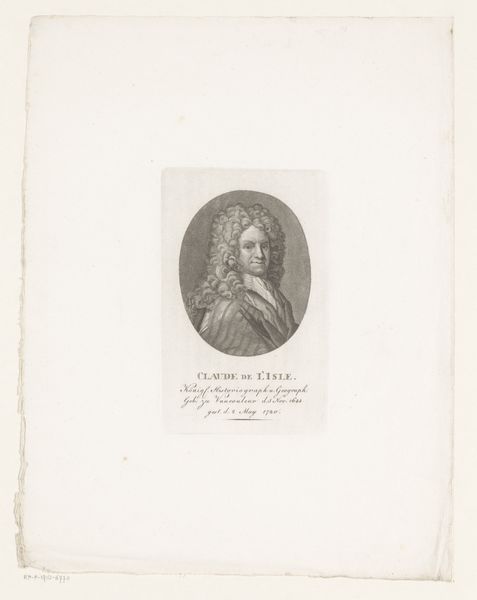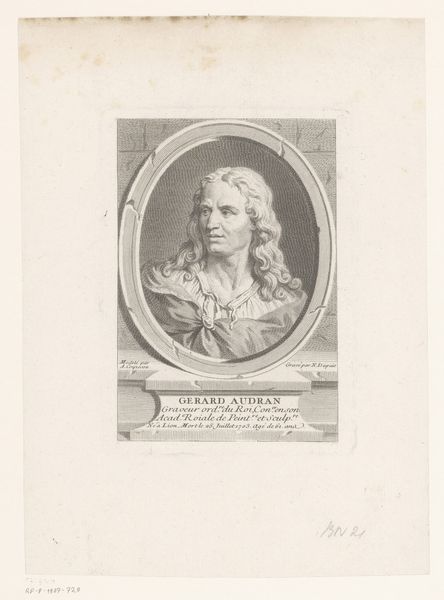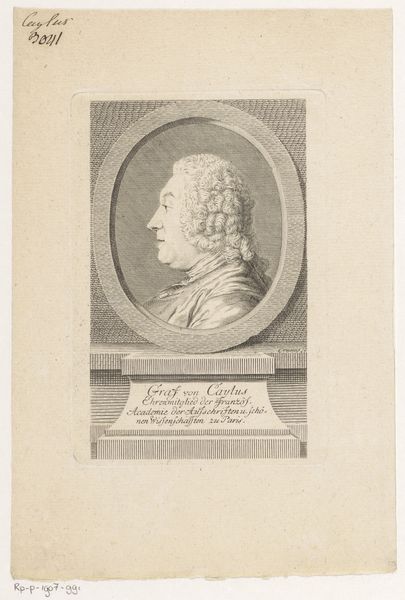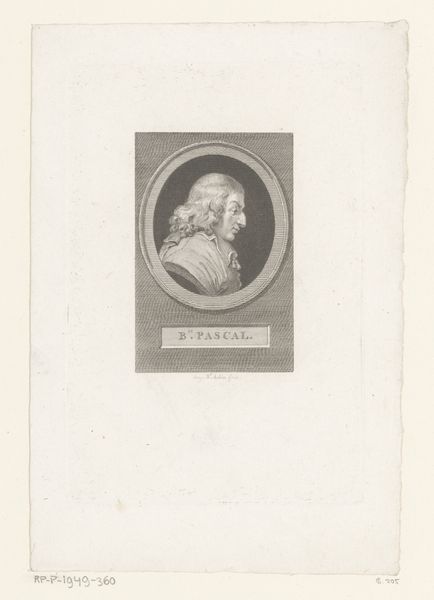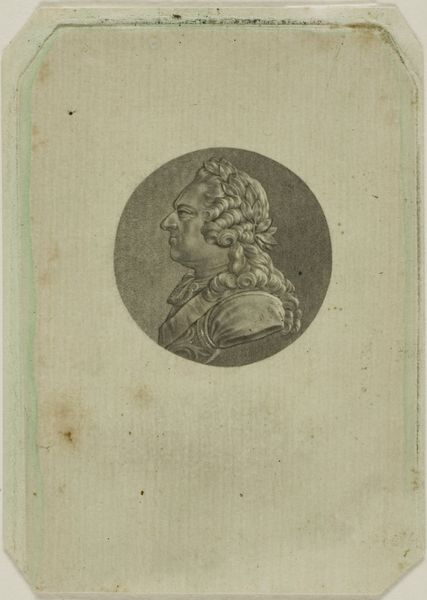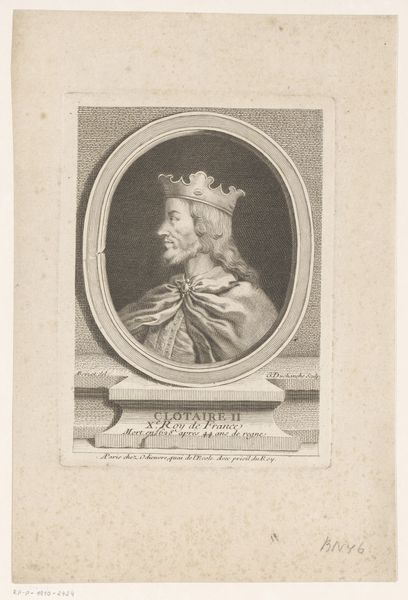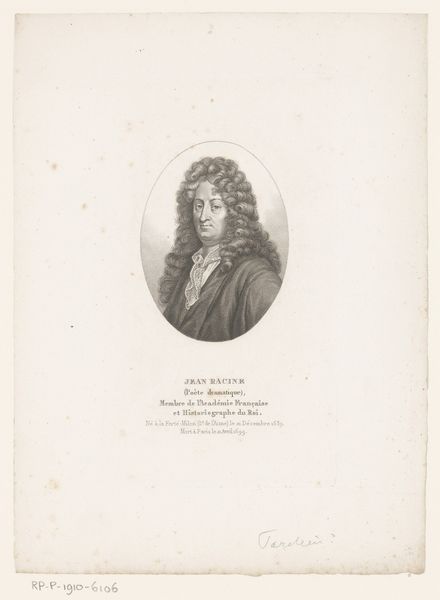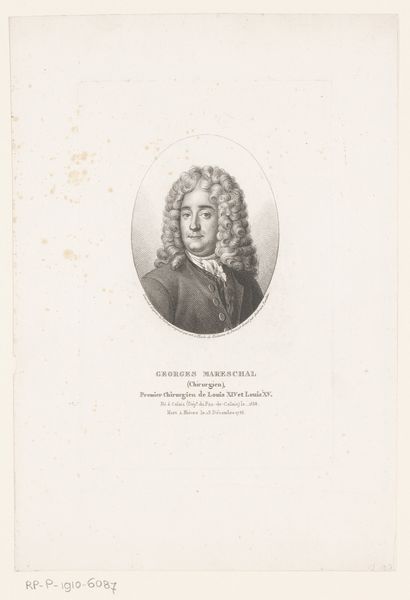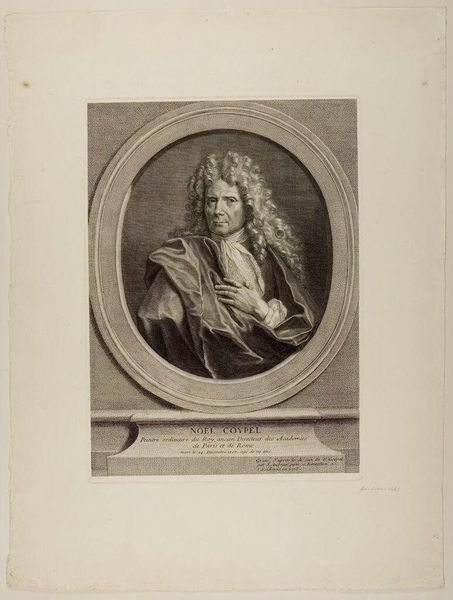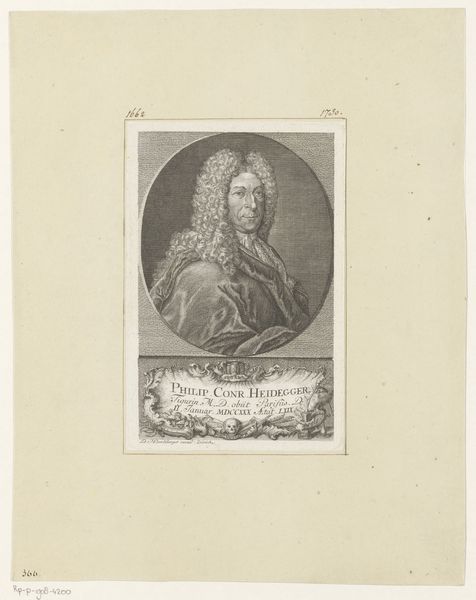
drawing, print, engraving
#
portrait
#
drawing
#
neoclacissism
# print
#
engraving
Dimensions: plate: 17.2 x 11.4 cm (6 3/4 x 4 1/2 in.) sheet: 26.6 x 17.3 cm (10 1/2 x 6 13/16 in.)
Copyright: National Gallery of Art: CC0 1.0
Editor: This is an engraving from 1805 by Augustin de Saint-Aubin, titled "Jean de La Bruyere." It depicts the writer in profile. The stark lines of the engraving create a very formal and almost austere feeling. How do you interpret this work? Curator: This piece speaks volumes about the cultural capital associated with intellectual figures in the 19th century. The very act of creating and circulating this portrait through print—engraving, specifically—positions La Bruyere, even posthumously, within a specific network of power and influence. To understand this image, we must ask: who commissioned it? Who was the intended audience? How does it contribute to the ongoing construction of La Bruyere’s identity? Editor: So, it's less about capturing La Bruyere's likeness and more about cementing his legacy? Curator: Exactly. Consider the implications of neoclassicism—the deliberate harkening back to a classical aesthetic, in a time just after the French Revolution and rise of Napoleon—the artist's drawing of sharp lines in his composition creates order to capture authority. The very style lends an air of authority. This elevation serves distinct social and political purposes and makes me question whose stories and histories were validated. Who was left out? Editor: It’s interesting to think about art not just as a reflection, but as an active participant in shaping cultural narratives and reinforcing existing power structures. Curator: Precisely. Even something as seemingly straightforward as a portrait serves to either challenge or reinforce certain hierarchies. Editor: I hadn't considered that angle before. Thanks, that really broadens my perspective. Curator: And hopefully complicates it too. Engaging with art history is never a passive experience.
Comments
No comments
Be the first to comment and join the conversation on the ultimate creative platform.

